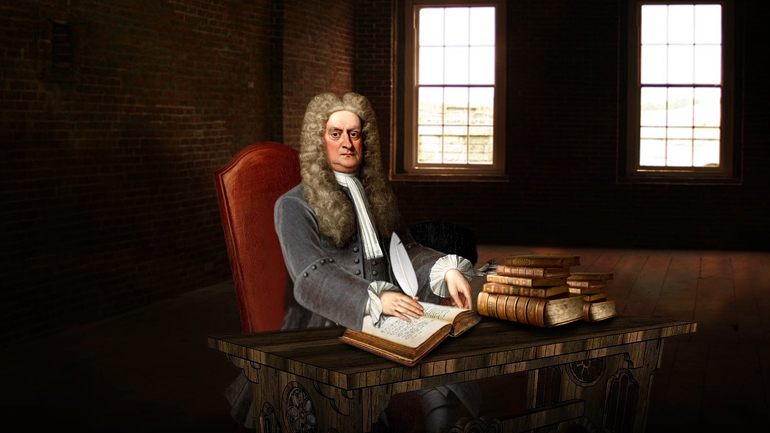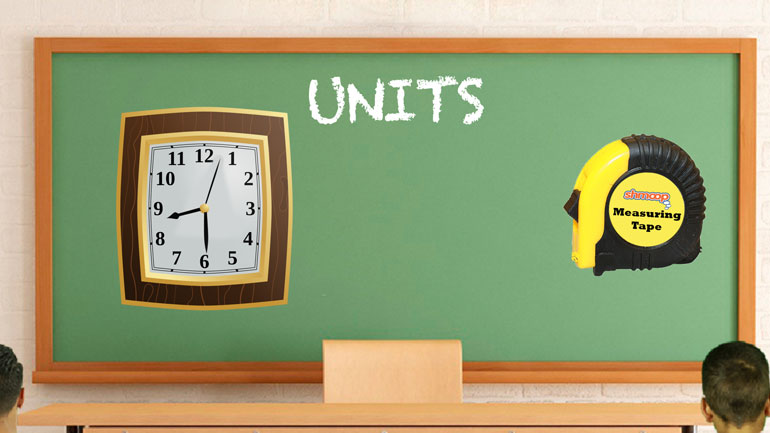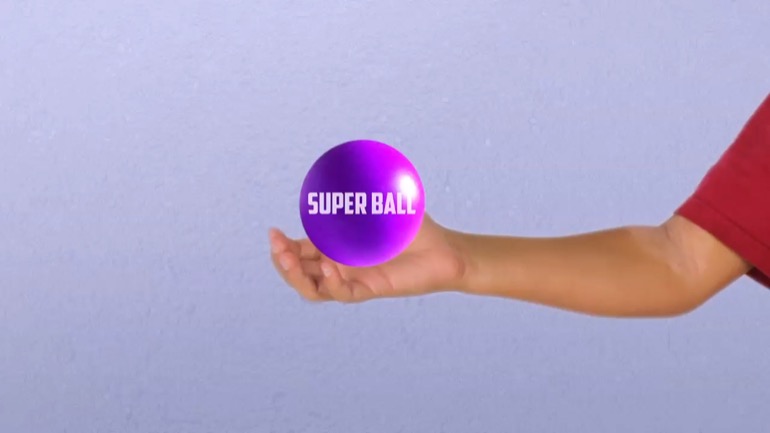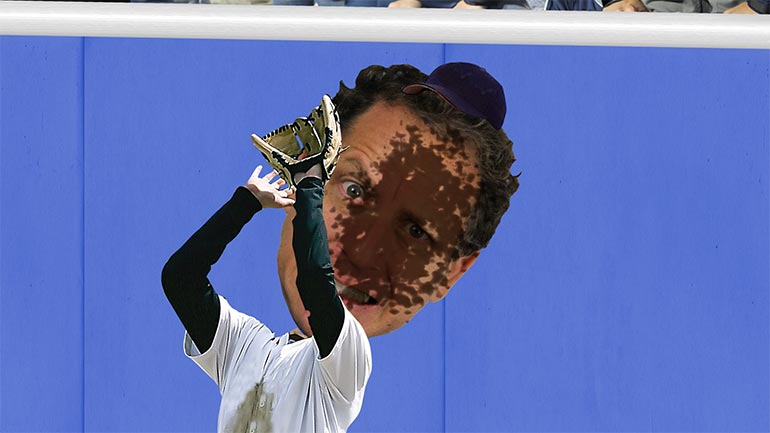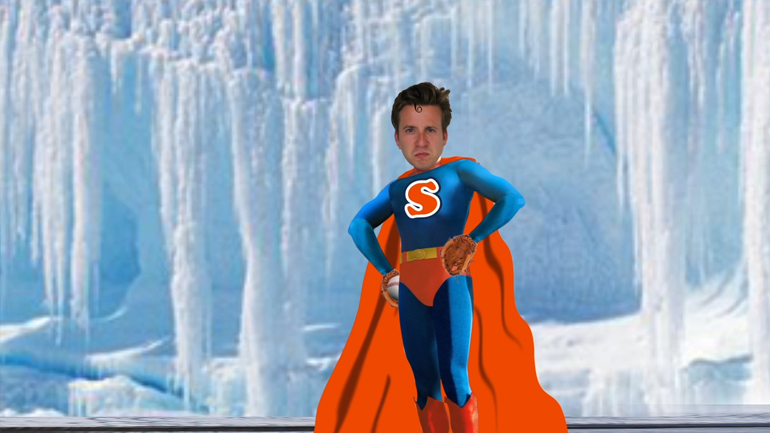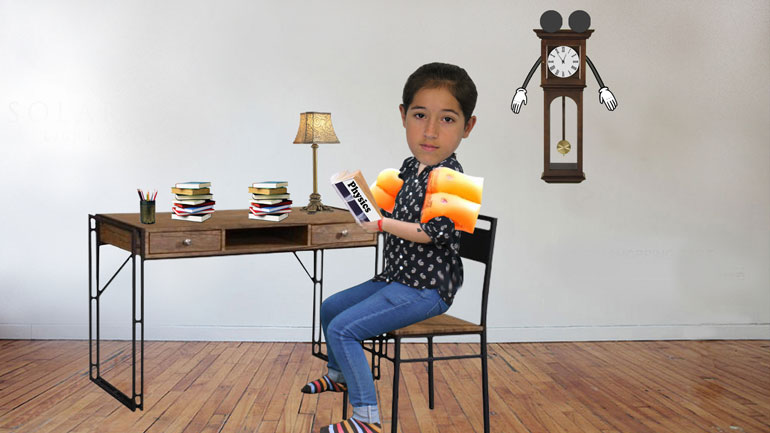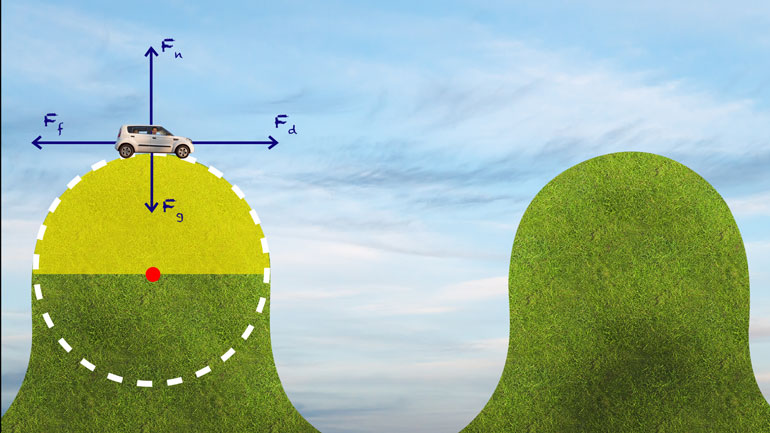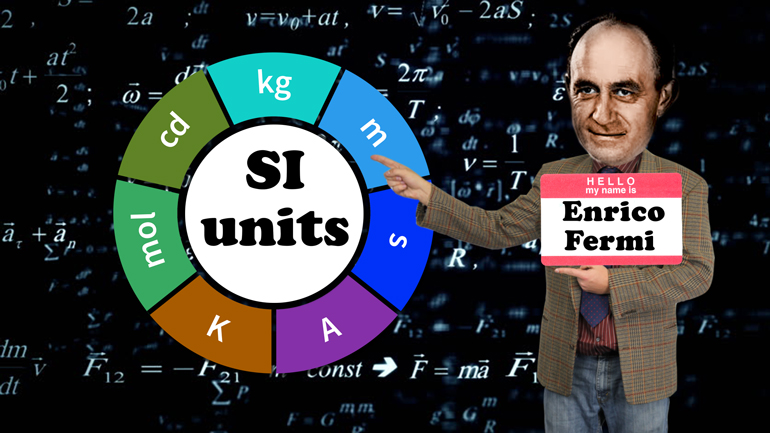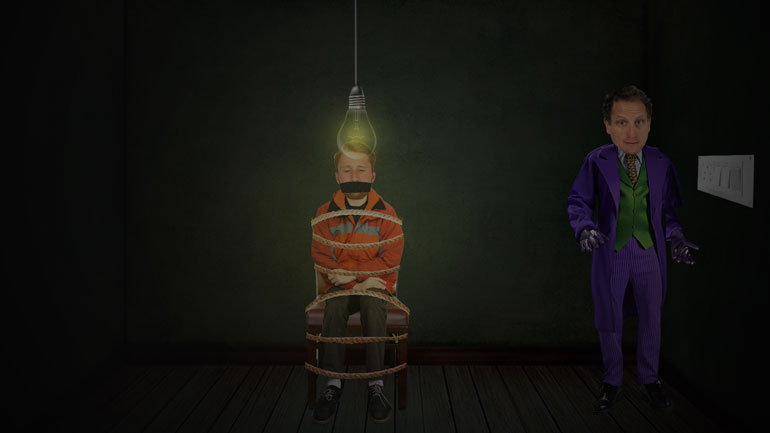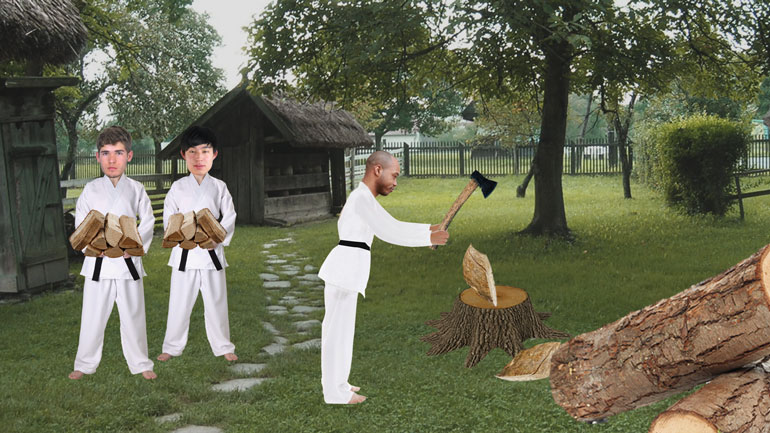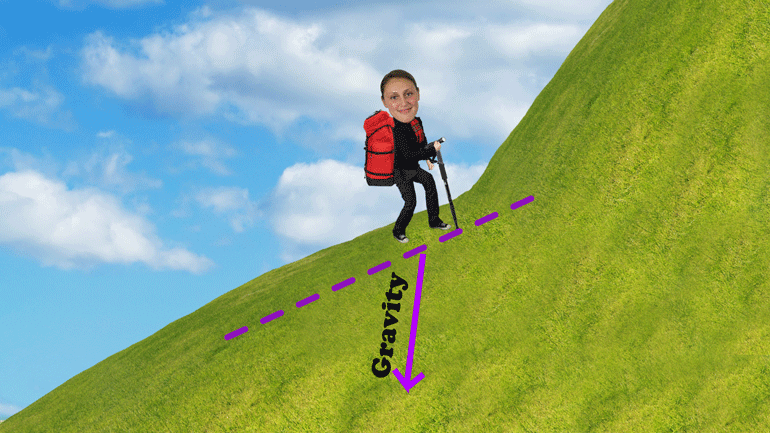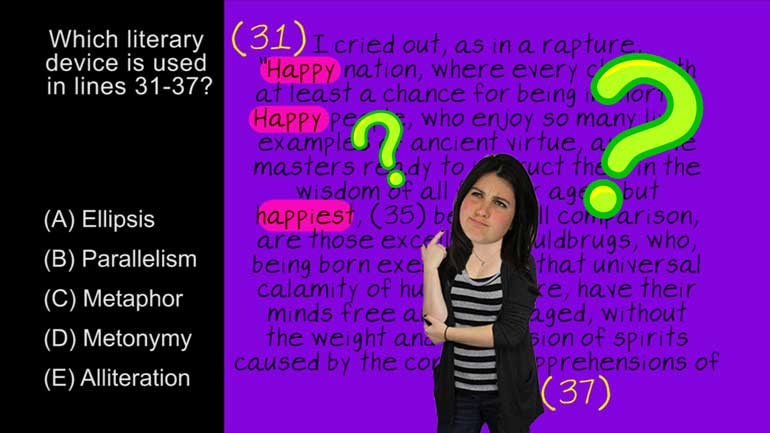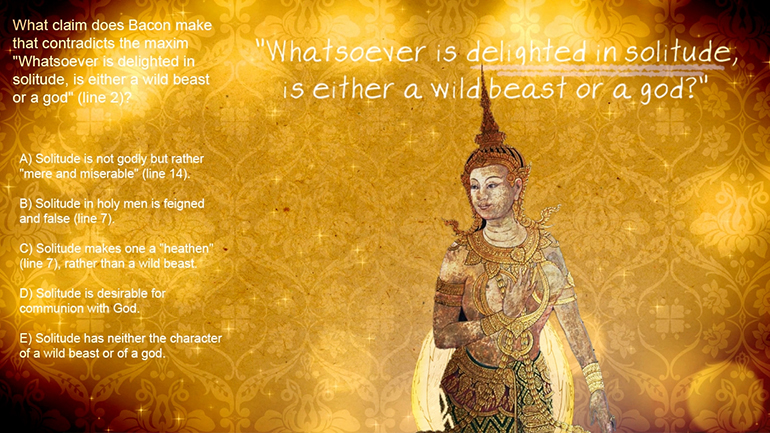ShmoopTube
Where Monty Python meets your 10th grade teacher.
Search Thousands of Shmoop Videos
Physics Videos 34 videos
Isaac Newton. Who was he? Why do we need to know about him? In a physics course, no less? Well, he's only the most famous physicist in history, and...
What are the basics of trigonometry? And why are we learning about this in a physics course? Both good questions. In this video, you'll learn about...
It's time to make our liters and meters work together. Enough of the bickering, right? In this video, we'll do some unit analysis, covering SI Unit...
Physics: Importance of Measurement 25 Views
Share It!
Description:
Meet "SI Units" - the gold standard of scientific measurement. Also meet sig figs, which Isaac Newton used to make the world's first "fig Newton."
Transcript
- 00:00
Physics, science needs measurement because otherwise we're just watching
- 00:07
stuff happen... We're skimming (reading the text under breath) [Bullet points about scientific measurements]
- 00:25
Okay here we go so let's recall the world as it existed
- 00:28
a long long time ago when we built our first experiment. Ah we remember that [Enrico Fermi pointing to two kids doing an experiment]
- 00:33
pendulum so fondly, yeah and that table we made? Such a
Full Transcript
- 00:37
beautiful piece of science because without it and our handy-dandy stopwatch [Girl taking measurements of the pendulum]
- 00:41
and meter stick, and scale well we'd just be watching something swing. Yeah so [Measurement tools disappear and the two kids look confused]
- 00:48
whatever we do in physics we've got to take measurements and we need to take
- 00:52
those measurements in the right way. So let's talk about units of measurement
- 00:56
first. In the olden days units of measurement could vary from place to
- 00:59
place, after all we can say something is 10 feet long but what if your foot is [Two different sized feet next to a ruler]
- 01:04
bigger than ours. So scientists developed SI units, SI stands for Systeme
- 01:11
International d'uintes. Yeah it's in French we showed up at school that day... [Teacher wearing a beret]
- 01:16
It's basically the metric system on steroids. We're used to metric [Muscly guy wearing metric system vest]
- 01:20
measurements for mass like the kilogram and for length like the meter, but SI units [Guy measuring how thick his bicep is]
- 01:27
also cover electrical current, time, temperature, amount of substance and
- 01:31
light. So we can measure everything in the physical world using SI units the
- 01:36
measurements for the non-physical world aren't quite as precise... yet. Well now [Guy wearing a lab coat hands over an IQ score of 118 and the other guy changes the score to 198]
- 01:42
even the best measurers in the world still make mistakes, no one is perfect no
- 01:46
matter what our mom tells us. So we have to account for measurement errors when
- 01:50
we're getting our science on. One way we can account for errors is to make
- 01:54
multiple measurements or run an experiment multiple times because the [Enrico Fermi wearing a chicken costume]
- 01:58
more data we have generally speaking the more confident we can be in the numbers. [Someone filling out a table of dependent variable values]
- 02:02
But the old saying we just made up goes measure a bunch science once. [Book opens to show the quote]
- 02:08
And sure maybe that saying doesn't make sense but nonsense has never stopped us
- 02:13
before... Welcome to shmoop. Yep well even with [Clown tells a guy he can't cross the bridge]
- 02:17
multiple measurements we'll still have some amount of error to deal with. Let's [Big red cross appears on the table of values]
- 02:21
say we're trying to figure out just how good we are at using a stopwatch. We know [Guy picks up his stopwatch]
- 02:26
we're not gonna get the time completely perfectly right we can only hit the
- 02:29
button so fast no matter how much coffee we had in the morning and sometimes it's
- 02:32
a lot like gallons gallons of coffee which we like.. So we do a little
- 02:36
experiment we try to stop the clock as close to 10 seconds as we can, after [He stops the clock at 10.25]
- 02:40
running that experiment a few times we find out that we're able to get the time
- 02:43
right within three tenths of a second. But the error rate means that sometimes
- 02:48
we were three tens too early and sometimes we were three tens too late. [Examples of the errors are shown in the table]
- 02:52
Coffee wearing off there.. So we were plus or minus three tenths of a second in
- 02:58
that trial and we record our data like this. Well our average time was 10
- 03:03
seconds plus or minus 3/10 of a second. All right well another way to look at
- 03:07
error rates is by percent error to figure out the percent error we have to [Boy shooting arrows at a target]
- 03:12
know what our target is, we'll call that the actual number. You might see it
- 03:16
referred to as the expected value or the theoretical value like in our stopwatch
- 03:21
test we just did. We know that the actual number we were trying to hit was 10
- 03:26
seconds and we'll use one of our measured numbers too, say 10.3
- 03:30
There's a good one, we then subtract the actual number we were trying to hit from
- 03:34
the measured number and we divide by the actual number. Then we multiply that [Working is shown]
- 03:40
result by a hundred to find our percent error, so in this case our percent error
- 03:44
would be three percent yeah not too shabby. And being good scientists we want
- 03:48
our percent error to be as low as possible so let's say we did that [Scientists playing limbo]
- 03:52
stopwatch experiment again. Remember just by playing around with a stopwatch you [Enrico Fermi in the chicken suit again]
- 03:56
get to tell your friends, you were doing a science experiment, yeah pretty
- 04:00
cool and you know we're physicists we've got to make ourselves sound cool
- 04:03
whenever we can. So let's say instead of running the clock for 10 seconds we only [Guy holding his stopwatch and watching the pendulum]
- 04:08
want it to run for one second, now just because we're measuring a shorter period
- 04:13
of time doesn't mean our thumbs are getting any faster here people.
- 04:16
So we'd still have an error rate of plus or minus three
- 04:20
tens of a second, well what would our percent error be now using ten seconds [Margin of error written into the value table]
- 04:25
versus one second. Well if our measured time was 1.3 seconds and our actual time
- 04:29
was 1 second our equation would look like this:
- 04:32
1.3 seconds minus one second gives us point three seconds divide that by our
- 04:37
actual number one second and yep we still end up with 0.3 seconds don't [The equation being written out]
- 04:42
multiply that by 100 and we get a percent error now of 30 percent ouch that's
- 04:47
pretty high. You wouldn't want someone grading a test
- 04:50
if you knew the grade they give you could be thirty percent too low. 30 [Girl looking sad holding a 70% graded test]
- 04:54
percent too high you could maybe live with below.. no. [The teacher then gives the girl a test that says 130%]
- 04:57
So we can see that taking a longer amount of time we can make our result
- 05:01
more accurate, which is why we timed our pendulum over ten periods not 1. We [The two kids doing the pendulum experiment again]
- 05:07
weren't just wasting time, we were reducing our error percent trust us when we're
- 05:11
just wasting time it's pretty obvious it's called YouTube. All right we also [A cat video on a monitor]
- 05:15
want to be precise when we take measurements if we're doing our old
- 05:18
stopwatch test while watching TV we might get a little distracted that final [A girl hands a rose to Fermi]
- 05:23
rose ceremony always sucks us in you know. So we're just stopping the clock
- 05:27
whenever we remember we might find that we stop it at 7 seconds and at 15
- 05:32
seconds and at 13 seconds and at 5 seconds and that averages out to 10
- 05:37
seconds so we could claim that our average time was accurate but we
- 05:41
couldn't claim it's very precise, and precision isn't everything. Let's say we [The range of values is shown]
- 05:45
were having a bad thumb day and instead of stopping the clock at 10 seconds we [Guy has a bandage on his thumb]
- 05:49
stop it at 12 point four seconds and eleven point eight seconds and 12.1
- 05:53
seconds and eleven point nine seconds. Well, that's pretty precise because all
- 05:57
the numbers are closely bunched together, but it's also pretty what's that word oh
- 06:02
yeah wrong. We want to be as close as possible to 10 seconds not 12 what [Big red cross appears]
- 06:07
were you thinking not enough coffee. So in this case we would be precise but we
- 06:11
wouldn't be accurate, we want both precision and accuracy in our
- 06:15
measurements and our golf game. We also want some chips all this science is making
- 06:20
us hungry. All right when we're looking at measurements we need to pay attention [Enrico Fermi with bowl of chips]
- 06:23
to the significant figures. The term significant figures refers to the number
- 06:28
of digits of a measurement that should be considered. It's not a
- 06:32
Hollywood bodies thing why is that important well because it gives us
- 06:36
information about how much of an error there may be with the value we're [A balloon flies into a fan and pops]
- 06:40
dealing with. There are four rules to consider when determining the sigfigs of
- 06:44
a measurement oh yes sigfigs is the super cool way of referring to significant [Rules of Sig Figs written on a stone]
- 06:48
figures among us physics people.. sorry. Alright we busy scientists you know we
- 06:54
don't have time for all the extra syllables. The first rule is that all
- 06:57
nonzero numbers are significant, so a number like 472 has three sig figs and [The rule being written onto a stone]
- 07:01
five point six nine seven has four the second rule zeros sandwiched between
- 07:06
nonzero digits are significant so if you've got a number like five thousand
- 07:11
nine then you're working with four sig figs. Now trailing zeros are only
- 07:15
significant if they come after a decimal point that's the third rule. So three
- 07:20
thousand only has one sig fig but three point zero zero zero has four. Keeping up
- 07:26
with us here? The fourth and final rule is that zeros to the left of the first
- 07:31
non-zero digit are insignificant. So a number like point zero zero three aka [Rule being written on a stone]
- 07:37
three thousandth only has one sig fig, in this case the leading zeros are
- 07:42
placeholders but they're considered to be insignificant which sounds harsh but
- 07:46
hey that's just how science rules. Well the number of sig figs and decimal [Arrow pointing out the placeholder numbers]
- 07:52
places we use when recording data is related to the amount of error in our
- 07:56
measurement, looking back at our stopwatch if the amount of error is 0.3
- 08:00
seconds we don't need to record the data to the nearest 10 millionth that's just
- 08:04
overkill. We know we need to record our data to the nearest tenth of a second [Animal gets runover after it's already lying in the road]
- 08:08
and when we're using a measuring device the error amount in our measurements
- 08:12
should be 1/2 of whatever is the smallest division. So if we're using a
- 08:16
scale that gives a weight to the nearest kilogram our error amount will be half a [Someone standing on the scales]
- 08:21
kilogram. If we have to do math with numbers that have a different degree of
- 08:24
precision sig figs in the number of decimal places have to be considered. If
- 08:29
we're adding or subtracting we want to record our result using the same number
- 08:33
of decimal places as the least precise measurement. So for adding 10.1
- 08:38
to 0.3004 we get a result of 10.4004, but our least precise measurement [The equation is shown]
- 08:46
10.1 has only one decimal place, so our result would be rounded to the nearest
- 08:52
tenth. Meaning we'll be recording the result as
- 08:55
10 point 4 when we're multiplying or dividing our result will be limited by
- 08:59
the number with the fewest significant figures, for example if we multiply 12.13
- 09:04
which has 4 sig figs by 37.0025 which has 6, we get a result of [The number of sig figs in each value is shown]
- 09:11
448.840325, don't worry we used a calculator there. The lowest amount of
- 09:16
sig figs in our factors is 4 so that's what we'd use when recording our data.
- 09:21
Making the final result for 448.8. Now let's look at orders of magnitude, but what's
- 09:27
the difference between 5 and 50 well yea 45 is one possible smart guy answer, yeah [50-5=45 appears]
- 09:33
that's right. But we're not talking about subtraction 50 is 10 times larger than 5. [A fist punches the 45 away]
- 09:37
Go ahead, double check our math if you're not sure now this is some high-level [Boy checking the answer on his calculator]
- 09:41
stuff here.. Another way of saying this is that 50 is one order of magnitude
- 09:45
greater than five. An order of magnitude is a power or exponent of 10, so 50 is
- 09:53
equivalent to 5 times 10 to the first power. 500 is equal to five times ten to
- 09:59
the second power. 5,000 is equal to five times 10 to the third power and so on. So
- 10:04
5,000 is three orders of magnitude greater than five you get the picture
- 10:08
here right and it goes in reverse too. 0.005 is equivalent to five times 10 to the [Guy in a mask steals a pictures and runs off then runs back the other way as he is chased by security]
- 10:15
negative third power, why is that important well for one thing it can [Guy writing out big number]
- 10:20
save us from carpal tunnel when we're dealing with really big or really tiny
- 10:24
numbers. It's a lot easier to write 5 times 10 to the 12th power than it is to [Fermi writing the numbers on a blackboard]
- 10:28
write out five trillion, and it can help us deal with those sigfigs we were just
- 10:32
talking about. If we have a number with a lot of digits but not a lot of sig figs
- 10:36
or sig figs we can make it easier on our eyes by
- 10:40
expressing it using orders of magnitude. 5,300,000 has seven digits but only two [A huge number is written out and zeros keep being added]
- 10:46
sig figs so we can write it as five point three times ten to the sixth and
- 10:51
not worry about the insignificant figures. But we can also use orders of [The example is written out]
- 10:55
magnitude to do some pretty cool estimations, see there are these things
- 10:58
called Fermi questions. Fermi questions are problems where you don't have a lot
- 11:03
of data to work with and you're just trying to make a good guesstimation of
- 11:07
the right answer. So what's a Fermi anyway well this guy's a Fermi yep [Guy on stage with a microphone, Fermi puts his hand up]
- 11:12
Enrico Fermi right here. I was a physicist who was really good at this
- 11:17
kind of thing I was even able to make a pretty good estimate of how much energy [Explosion goes off]
- 11:20
an atomic bomb would release, but that's kind of a downer so why don't we tackle
- 11:24
something a little tastier, like how many jellybeans would fit inside the [Guy playing American football is tackled]
- 11:28
Washington Monument that's a good one. You know Washington Monument right big [The monument opens in the the middle and a jelly bean is put inside]
- 11:32
pointy thing in Washington DC well the monument has a volume of
- 11:36
31,1776 cubic meters, and a jelly bean has a volume of about one cubic centimeter. And
- 11:42
that's all the info we need to make a good guess at this problem so 31,1776
- 11:48
cubic meters has four orders of magnitude and one cubic centimeter has
- 11:52
negative six orders of magnitude, which may not seem obvious at first so let's
- 11:56
break that down. A centimeter is 1/100 of a meter right, so that's negative two [A giant wrecking smashes into skyscrapers and knocks them over]
- 12:02
orders of magnitude but we're not just dealing with length here our unit of the
- 12:07
measurement is cubed adding another exponent into the mix. So we have to [Fermi talking]
- 12:11
multiply our exponents here, which is how we get to the negative sixth order of
- 12:15
magnitude. Another way of putting it is that one cubic centimeter equals ten to
- 12:19
the negative six cubic meters, don't worry we'll go more into this kind of
- 12:23
stuff later when we tackle unit analysis. Yes we can't wait to get there either. [Girl flicking through a calendar and unit analysis appears]
- 12:27
Okay so how far apart are our two starting numbers in terms of orders of [Parents look annoyed at kids messing about in the back of a car because they're bored]
- 12:32
magnitude, well if we put them on a number line we see that they're ten
- 12:35
orders of magnitude apart we can find this mathematically too using dimensional [The area on the number line is highlighted]
- 12:40
analysis. Now how does that work, well we thought you'd never ask..
- 12:43
So we want to figure out how many jellybeans it takes to fill a monument
- 12:47
or to say it a little differently how many jellybeans do we need per monument.
- 12:52
Sounds like a ratio to us and we can express it as a fraction. Of course every [Monuments filled with jelly beans]
- 12:57
fraction needs a numerator and a denominator. Well we'll put in the unit [Mom with her kids, she is the fraction and the kids are the denominator and numerator]
- 13:01
we want for the numerator which is jellybeans and the unit we want for the
- 13:05
denominator AKA the monument in the denominator, fit there [The kids are replaced by the monument and jelly bean]
- 13:09
never thought you'd be using jellybeans and monuments as, in a fraction did you...
- 13:14
Alright so we know we want our final result to be expressed as jellybeans per
- 13:19
monument, and since we know our orders of magnitude we can set up an equation the [Fermi points to the monument filling up with jelly beans]
- 13:24
volume of the monument has four orders of magnitude, meaning there are 10 to the
- 13:27
fourth cubic meters per monument and there was only one jelly bean per every
- 13:32
ten to the negative six cubic meters. So when we cancel out the meters and do the
- 13:38
math we find that there are 10 to the 10th jellybeans per monument and now we [The equation is shown]
- 13:42
can plug in our real numbers to this equation, remember the area of the
- 13:45
monument is 31,776 cubic meters and using the right order of magnitude that
- 13:50
would be three point one seven seven six times 10 to the fourth. We're only
- 13:55
working with one jelly bean here so we don't need to change that, it turns out
- 13:58
that three point one seven seven six times one equals three point one seven
- 14:03
seven six yeah we really like that kind of math. So we find that three point one
- 14:06
seven seven six to the tenth order of magnitude jellybeans will fit inside the [The monument fills up with beans]
- 14:10
Washington Monument if it was hollow. But wait, remember what we said about sig [Record player stops]
- 14:15
figs and multiplication, yeah we don't either...
- 14:18
Wait it's coming back to us, we said that when we're multiplying or dividing our
- 14:24
result will be limited by the number with the fewest significant figures. The
- 14:28
volume of the monument has five sig figs but we're only dealing with one
- 14:32
jellybean which has one sig fig. So our answer should be expressed using one sig
- 14:37
fig. Meaning that about three times 10 to the
- 14:40
10th jellybeans will fit inside the Washington Monument that's ten billion [Final answer is shown]
- 14:44
jellybeans, which makes our teeth hurt just thinking about it. Okay so there may [Guy opens a door and thousands of jelly beans pour out]
- 14:49
not have been much actual sciencing done just now, it was a lot of numbers [Fermi holding a ball on a string]
- 14:53
measury stuff but it's not like you can separate physics from math it's a
- 14:57
pretty much package deal there. Yeah that's Sheldon...
Related Videos
When you're about to marry the love of your life, not many things could stop you. However, finding out that your future hubby is keeping his crazy...
Here at Shmoop, we work for kids, not just the bottom line. Founded by David Siminoff and his wife Ellen Siminoff, Shmoop was originally conceived...
ACT Math: Elementary Algebra Drill 4, Problem 5. What is the solution to the problem shown?
AP® English Literature and Composition Passage Drill 1, Problem 1. Which literary device is used in lines 31 to 37?
AP® English Literature and Composition Passage Drill 2, Problem 1. What claim does Bacon make that contradicts the maxim "Whatsoever is delig...
